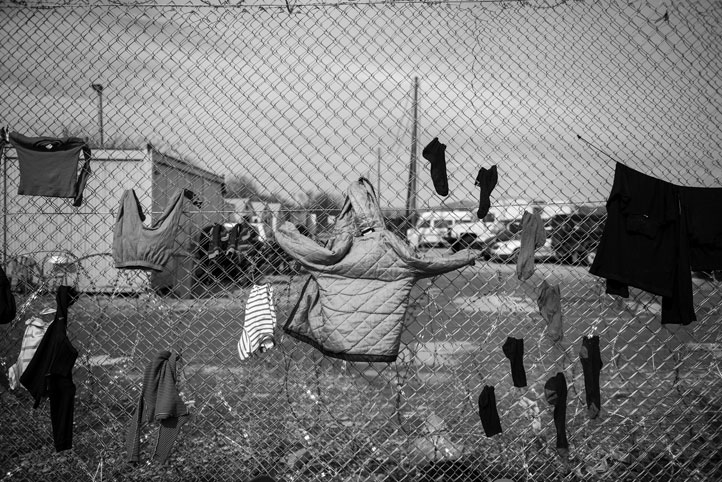Staggering scale of grave violations against children in conflict

Between 2005 and 2020, the United Nations verified over 266,000 grave violations against children committed by parties to conflict in more than 30 conflict situations across Africa, Asia, the Middle East, and Latin America, UNICEF said today in a new report.
This figure is a fraction of the violations believed to have occurred, as access and security constraints, among others, and the shame, pain, and fear that child and family survivors suffer often hamper the reporting, documentation and verification of grave violations against children in situations of armed conflict.
The report – 25 years of children and armed conflict: Taking action to protect children in war – found that between 2005 and 2020 more than 104,100 children have been verified as killed or maimed in situations of armed conflict; more than 93,000 children have been verified as recruited and used by parties to conflict; at least 25,700 children have been verified as abducted by parties to conflict; parties to conflict have raped, forcibly married, sexually exploited, and committed other grave forms of sexual violence against at least 14,200 children. The United Nations verified more than 13,900 incidents of attacks against schools and hospitals and verified no fewer than 14,900 incidents of denial of humanitarian access for children since 2005.
“This report lays out in the starkest possible terms the world’s failure to protect its children from grave violations during times of armed conflict,” said UNICEF Executive Director Catherine Russell. “Grave violations devastate children, families, and communities – and they tear at the fabric of society, making it even harder to restore and sustain peace, security, and stability. We must refuse to accept violations against children as an unavoidable outcome of war.”
Based on sixteen years of data from the Secretary-General’s Annual Report on Children and Armed Conflict, the report illustrates the impact that armed conflicts have had on children, by presenting trends of grave violations across the world and over time. The report examines how information on the documented patterns of grave violations is being used to respond to children’s needs and how engagement with parties to conflict – State and non-State actors alike – enables ending and preventing grave violations.
The annual number of verified violations has gradually increased since 2005, surpassing 20,000 in a year for the first time in 2014 and reaching 26,425 in 2020. Between 2016 and 2020, the daily global average of verified grave violations stood at an alarming 71 violations. The elevated number of violations observed in recent years demonstrates the dramatic impact that armed conflict – and increasingly complex and protracted protection crises – have on children.
The report notes that many children suffer from more than one violation, increasing their vulnerability. For example, abduction is often combined with or leads to other violations, particularly recruitment and use and sexual violence. Children – especially girls – who have been abducted and/or associated with parties to conflict are exposed to elevated risks of sexual violence, including rape, sexual exploitation and forced marriage.
The report found that grave violations against children were committed by all parties to conflict, States and non-State actors alike. Between 2016 and 2020, State actors – including national and international forces and coalitions – were responsible for at least 26% of all violations. In comparison, non-State actors accounted for about 58% of all verified violations, underscoring the importance of engagement with all parties to conflict, including non-state actors, to meaningfully end and prevent violations against children.
In order to bolster accountability, parties to conflict listed in the Secretary-General’s annual report on children and armed conflict develop and implement Action Plans with specific, concrete, and time-bound actions to establish sustainable measures to protect children from the impact of conflict. Between 2005 and 2021, a total of 37 Action Plans have been signed by parties to conflict in 17 conflict situations. Around 70 per cent of Action Plans were signed with non-State actors, with the remaining 30 per cent signed with State actors. The report lays out several examples highlighting the critical value and impact of Action Plans in bringing about positive change for children, both in the immediate and long terms, as well as outlining challenges and obstacles.
The ever-growing number of armed non-State actors, the development and employment of new means and methods of warfare, the use of improvised explosive devices and other explosive weapons, particularly in populated areas, are just some of the many factors contributing to the creation of unprecedented challenges for the protection of children in situations of armed conflict.
Report from UNICEF
Related Posts
Syrian girl who survived horrors of war crowned Arab Reading Challenge champion
A Syrian schoolgirl who survived a deadly missile attack during the civil war in her country has been crowned Arab Reading Challenge champion in Dubai….
November 11, 2022Kind Hearts book is launched in Wexford Library where children recount life in Syria
We’ve become accustomed to seeing children arriving into this country from war-torn nations, grown used to images of terrified people seeking refuge in this safe-haven we have provided. But rarely do we see beyond those pictures, those snippets in time, each of them fading, merging into one as further conflict erupts in lands anew….
October 18, 2022


